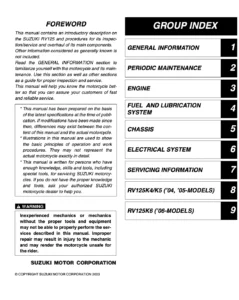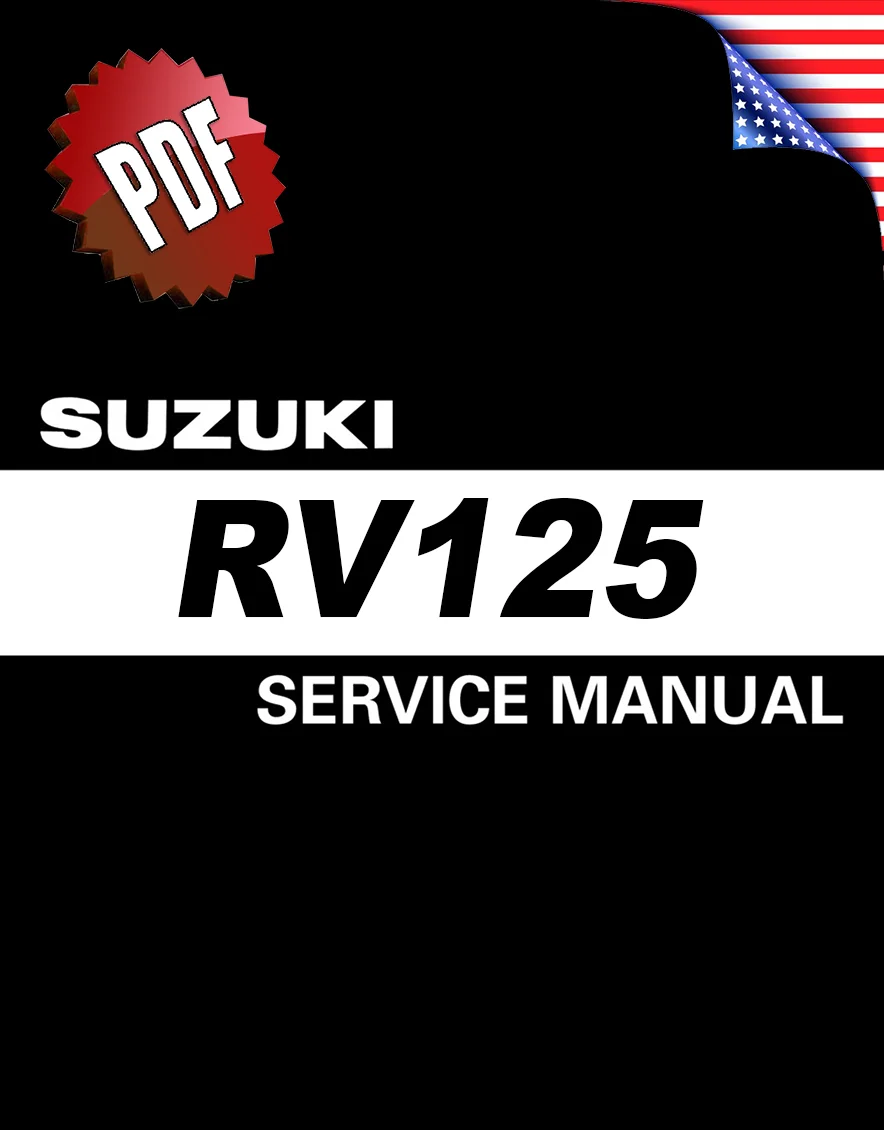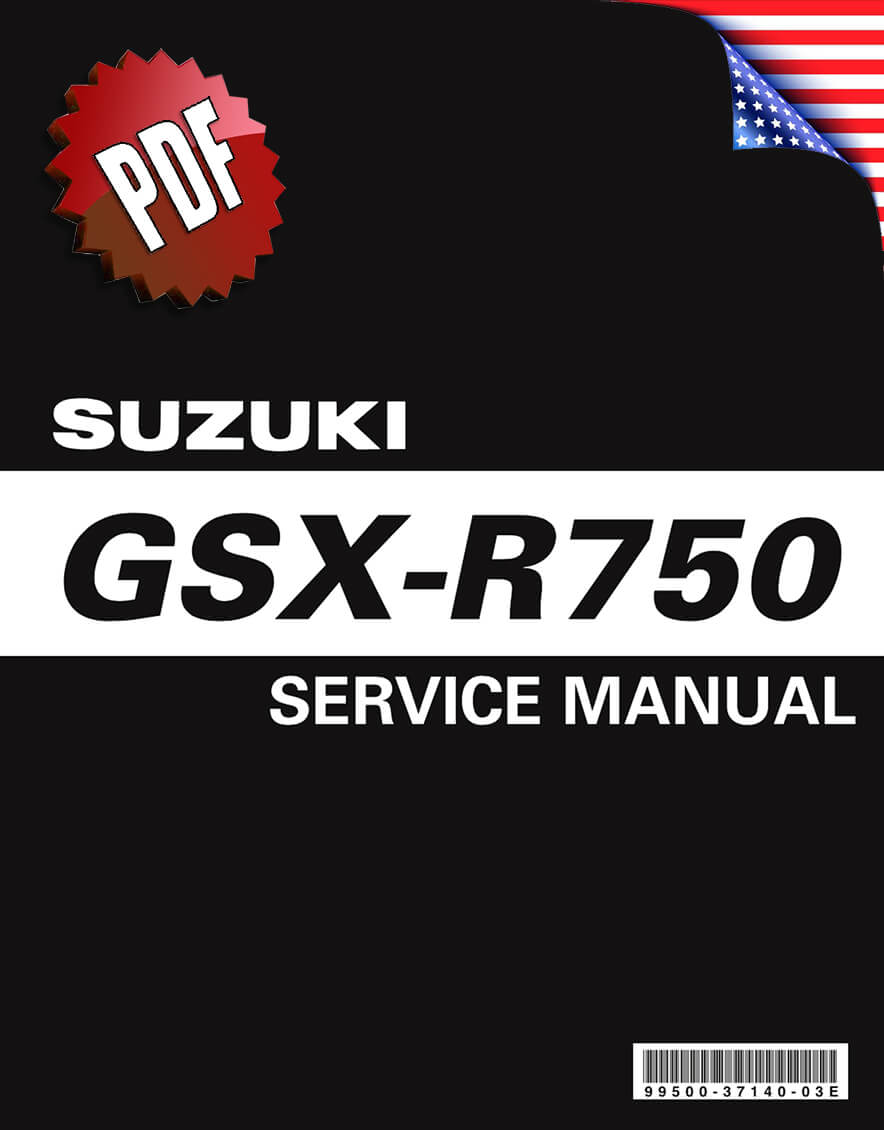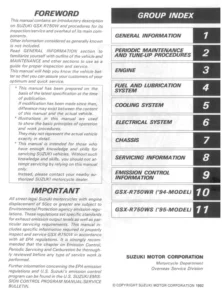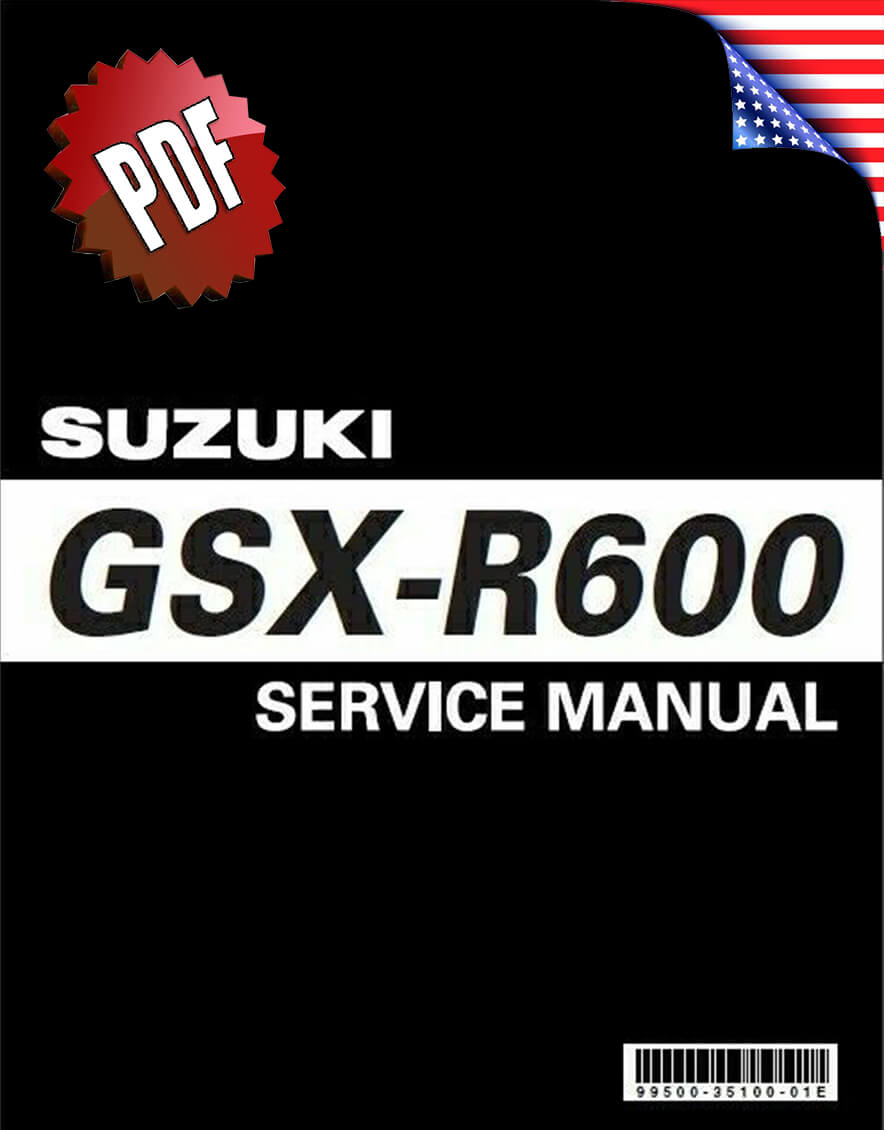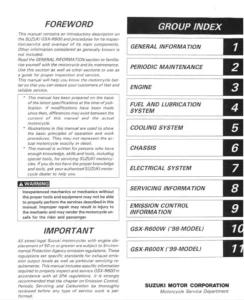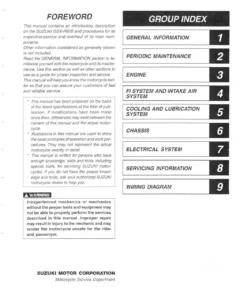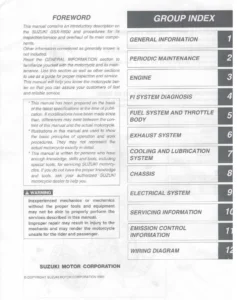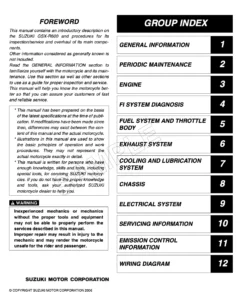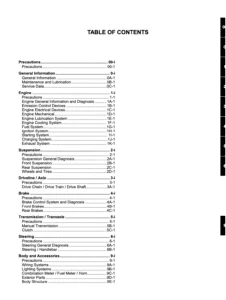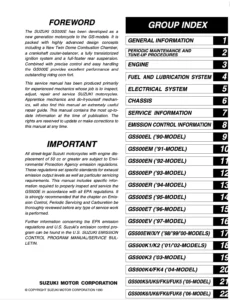Complete PDF version of the Service Manual for the Suzuki DL650 1st generation. A MUST for every V-STROM owner.
Download: Immediately after payment!
OEM Original factory workshop manual.
Models covered by this manual: 2004 to 2011
Number of pages: 487 pages
Table of contents:

This PDF repair manual can be downloaded right after the payment process in complete, on the device of your choice.
We do not offer printed manuals, for the following reasons:
- it is more eco-friendly to use a digital version
- your manual never gets dirty or greasy
- you can always choose to print the specific page(s) you need to work on your bike
- you receive your manual immediately after payment
- it is searchable

Suzuki DL650 V-Strom
Suzuki’s V-Strom 650 (DL650) is a mid-weight sport touring motorbike that has been in production since 2004, and is now in its third iteration as of model year 2017. It sports a conventional riding position, fuel injection, and an aluminum chassis. The DL650 is built in Suzuki‘s final assembly factory in Toyokawa, Japan, and is sold in Europe, Oceania, the Americas, and, as of 2018, India.
The V-Strom 650 sacrifices strength in one area for versatility to a wide range of riding circumstances, including commuting, cruising, adventure touring, and, to a lesser extent, off-road riding. The motorcycle can be classified as dual sport, sport enduro tourer, street/adventure, commuter, or entry-level.
According to the New York Times, the V-Strom has a devoted fan base across the world, and the DL650 outsells the larger Suzuki V-Strom 1000, the Suzuki V-Strom 1050, and the smaller Suzuki V-Strom 250.
The name V-Strom is a combination of V, which refers to the bike’s V engine design, and Strom, which means stream or flowing in German.
The V-Strom uses a two-into-one exhaust system with a fuel-injected and somewhat retuned 645 cc engine from Suzuki’s SV650 sport bike. A normal, upright riding stance improves the bike’s handling qualities.
Engine
The engine is a liquid-cooled, four-stroke V-twin with a bore of 81.0 mm (3.19 in) and a stroke of 62.6 mm (2.46 in), four valves per cylinder, and intake and exhaust valving with their own camshafts.
When compared to the SV engine, its more relaxed cam profiles increase power between 4,000 and 6,500 rpm, coupled with minor adjustments to the airbox and exhaust.
A revised starting clutch increases crank inertia (flywheel effect) by 4% compared to the SV.
In addition, for reduced weight and noise, the DL650 engine employs a plastic outer clutch cover and engine sprocket cover.
Unlike the SV engine, which has cast iron cylinder sleeves, the DL650 has plated cylinders with Suzuki’s proprietary SCEM (Suzuki Composite Electro-chemical Material), a race-proven nickel-phosphorus-silicon-carbide coating for reduced weight and improved heat transfer, allowing for tighter and more efficient piston-to-cylinder clearance, similar to a Nikasil coating.
Electronics in engines
The DL650 engine electronics assist with starting and throttle control, and it employs Suzuki’s AFIS (Auto Fast Idle System), which eliminates the need for a fast-idle control.
The engine control module (ECM) reads engine information, such as coolant temperature, and controls the fuel system’s two throttle bodies using a 32-bit central processing unit (CPU).
Emissions
The DL650 has Suzuki Dual Throttle Valve (SDTV) fuel injection and an exhaust system with a catalytic converter in the muffler.
European models satisfy Euro 3 emissions standards. A “PAIR” air injection system decreases CO and HC emissions in the United States.
Chassis
A rear Showa mono-shock with rebound and hydraulic preload control is housed in a robust, twin-spar aluminum frame and swingarm.
The damper-rod forks on the front Showa are not adjustable. The DL650 features a front wheel that is 19 inches in diameter and a rear wheel that is 17 inches in diameter.
Bodywork and instruments
A compact analog step-motor speedometer and tachometer (both with LED illumination) and a digital LCD unit with odometer, trip meter, coolant temperature gauge, fuel gauge, LED neutral, digital clock, turn signal and high beam lights, and an oil pressure warning light comprise the bike’s instrument cluster.
A windshield that may be adjusted enables for 50 mm of mobility (2.0 in). A tiny underseat compartment, perfect for small tools, gloves, or an owner’s handbook, is accessible by removing the seat and using a lock placed at the back of the bike, immediately below the built-in rack.
First generation
2004
2005
- Headlight interruption upon beginning has been introduced.
- Only 100 special edition models were made, each with many unique accoutrements and a tire mark painted on the fairing.
2007
- ABS Optional (Anti-lock braking system)
- The wheelbase was expanded from 1,540 to 1,550 mm (60.6 to 61.2 in) with a 15.2 mm increase in swingarm length (.597 in)
- Each cylinder has two spark plugs. (European Models Excluded)
- The idle adjustment screw was removed.
2008
- Alternator output increased from 375 to 400 watts.
2009
- All-steel rear axle locknut, formerly castellated nut type.
(On US models only; Australia and New Zealand models always have this function.) - Previously amber signal light lenses have been replaced with clear lenses.
2010
- There are no 2010 models in the United States.
2011
- ABS standard on all 2011 models sold in the United States.
Source: Wikipedia
